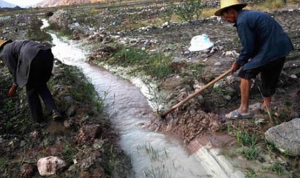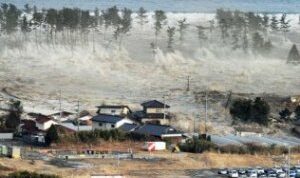 Swarming locusts may be drawn to overgrazed fields because the insects prefer to feed on low-nitrogen plants in areas where the soil is depleted, US and Chinese researchers said Thursday.
Swarming locusts may be drawn to overgrazed fields because the insects prefer to feed on low-nitrogen plants in areas where the soil is depleted, US and Chinese researchers said Thursday.
In bad years, locust swarms can inhabit as much as 20 percent of the Earth’s surface, particularly in Asia and Africa, and negatively impact the livelihoods of one in 10 people, according to the article in the journal Science.
Since little is known about what makes locusts swarm, a team of scientists from the University of Arizona along with experts at the Chinese Academy of Sciences decided to find out what was driving them.
Theorizing that the insects were trying to find better food sources, they doused land plots at the Inner Mongolia Grassland Ecosystem Research Station in China with nitrogen, thinking the locusts would prefer higher protein plants.
Instead, the locusts who ate nitrogen-fertilized plants either died or grew more slowly than typical locusts — the type studied were Oedaleus asiaticus, one of the two main swarming locusts of Asia.
After more field observation and testing different diets in the lab, they realized the locusts liked to eat low-protein, high-carbohydrate diets, typically found in overgrazed areas.
“These experiments confirmed that consuming foods with too much protein is deleterious for this locust, explaining why heavy grazing promotes populations of Oedaleus,” said co-author Jon Harrison.
The locusts, close cousins of the grasshopper, may have adapted in order to survive and even thrive in a sparse environment, said lead author Arianne Cease.
“Our results fit with an emerging paradigm that animal species can vary dramatically in their nutritional responses,” said Cease.
“The particularly low protein (to high) carbohydrate preference of Oedaleus may explain their success in a heavily grazed world.”
The researchers added that nitrogen fertilizer, such as airborne nitrogen deposited on grasslands, may be a cheap and less damaging alternative to chemical pesticides for trying to control locusts in the future.




